Fast food is supposed to be simple—cheap, quick, and satisfying. But sometimes, it becomes a lightning rod for controversy, sparking outrage that goes far beyond what’s inside the wrapper. Over the years, major chains have launched products so bold, bizarre, or downright offensive that they’ve triggered public backlash, social media meltdowns, and even lawsuits.
From tone-deaf marketing stunts to health disasters disguised as innovation, these controversial menu items prove that not all publicity is good publicity. Take McDonald’s McAfrika, for example—launched in Norway during an African famine, it quickly became a global PR nightmare. Or Burger King’s Satisfries, which tried to make french fries “healthy” but ended up tasting like disappointment. Some items, like KFC’s Double Down or Krispy Kreme’s Donut Burger, pushed boundaries so far they raised serious health concerns, yet still flew off the shelves due to sheer curiosity (or shock value).
In other cases, the backlash stemmed from misleading advertising, questionable ingredients, or bizarre flavor mashups—like Dairy Queen’s infamous Grilled Cheese Blizzard. And then there were products that succeeded commercially but drew heavy criticism from nutritionists and advocacy groups for targeting kids or glorifying excess.
This list dives deep into 13 of the most outrageous fast food flops, PR blunders, and nutritional nightmares ever unleashed on the public. Each one made headlines not just for what it was, but for what it represented: misjudged cultural moments, failed attempts at reinvention, or a complete disregard for the consumer’s palate (and waistline).
Whether you remember them with horror, humor, or hunger, these infamous items changed how we view fast food—and some left a stain that no amount of ketchup could cover.
1. McDonald’s McAfrika
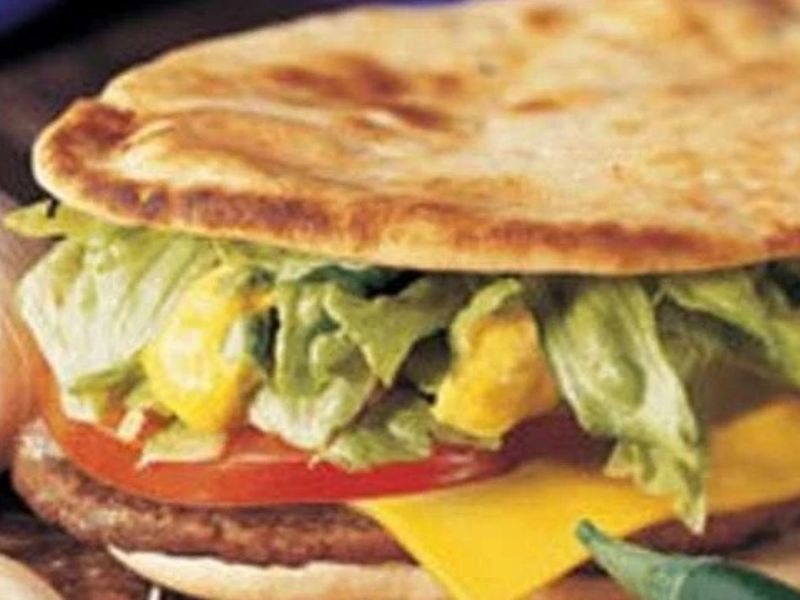
McDonald’s launched the McAfrika burger in Norway in 2002 while millions across Africa faced severe famine. The sandwich, featuring beef, cheese, and vegetables in pita bread, was marketed as an authentic African recipe.
Public backlash was swift and fierce. Critics called the timing tone-deaf and insensitive, especially since the promotion ran in one of the world’s wealthiest countries while 12 million Africans faced starvation.
After intense pressure, McDonald’s placed donation boxes for famine relief in their restaurants but refused to pull the sandwich completely. The McAfrika remains a textbook example of catastrophic marketing timing.
2. Burger King’s Satisfries
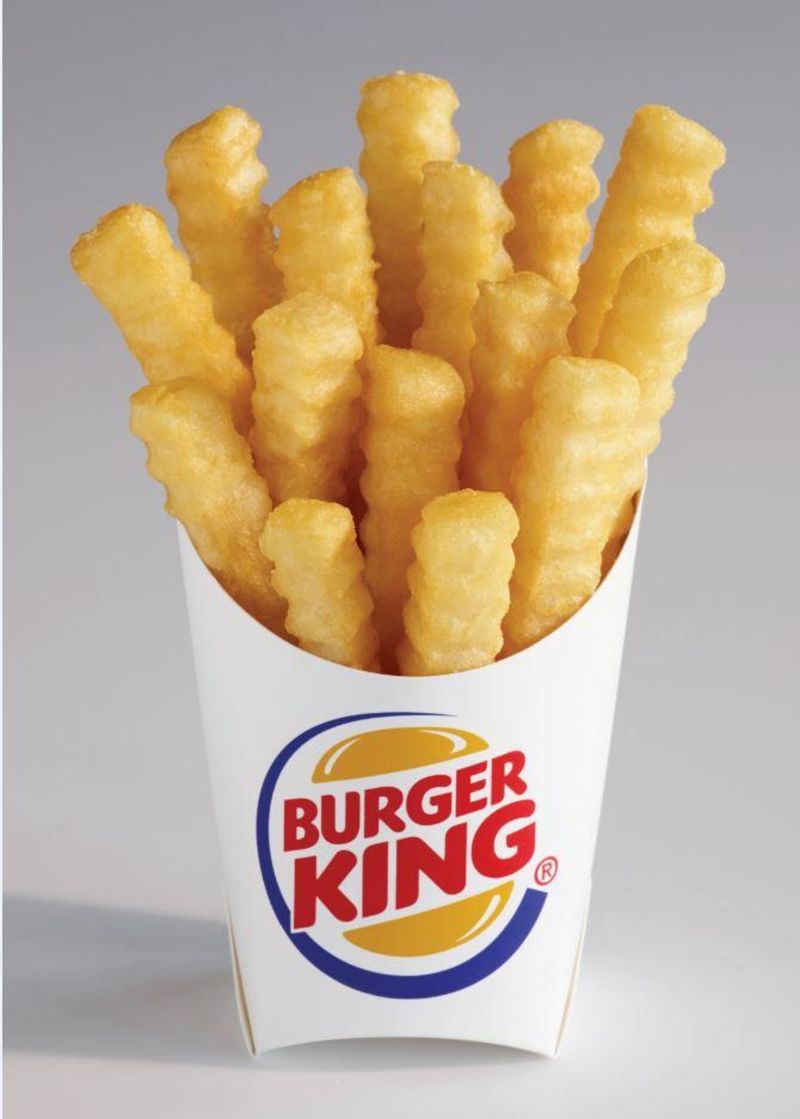
Remember when Burger King tried to make french fries healthy? Their 2013 launch of Satisfries promised 40% less fat and 30% fewer calories than regular fries. The crinkle-cut creations were supposed to absorb less oil during cooking.
Customers weren’t buying it – literally or figuratively. Many complained the fries tasted bland compared to the original version. Others noticed the portions seemed smaller while prices were higher.
Less than a year after their big debut, Satisfries disappeared from most locations. The health-conscious alternative became a prime example of good intentions meeting poor execution in the fast food world.
3. KFC’s Double Down
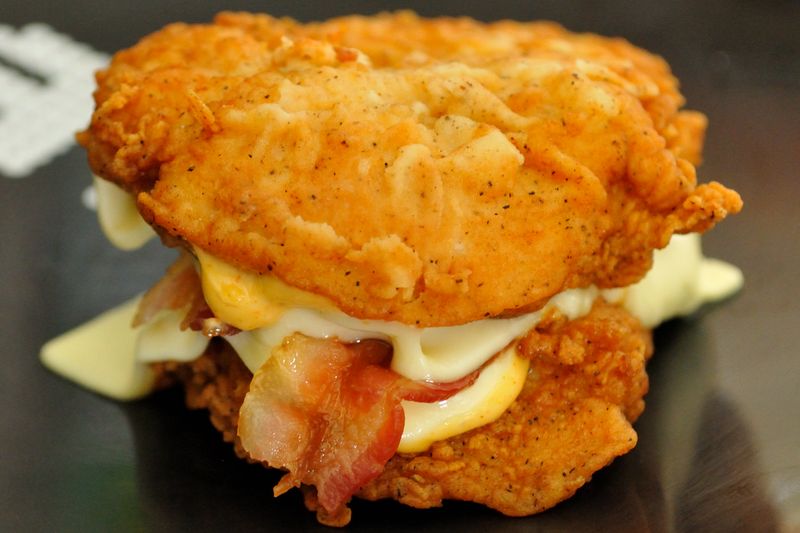
KFC shocked the food world in 2010 with a sandwich that used fried chicken instead of bread. The Double Down sandwiched bacon, cheese, and special sauce between two chicken fillets – creating a protein bomb that nutritionists immediately condemned.
Packing nearly 600 calories and 1,430 mg of sodium, health advocates called it irresponsible amid America’s obesity epidemic. The sandwich became a symbol of fast food excess.
Despite the criticism (or perhaps because of it), curious customers lined up to try the novelty. KFC sold over 10 million Double Downs in the first month, proving that controversy sometimes translates directly into sales.
4. Taco Bell’s Beefy Crunch Burrito
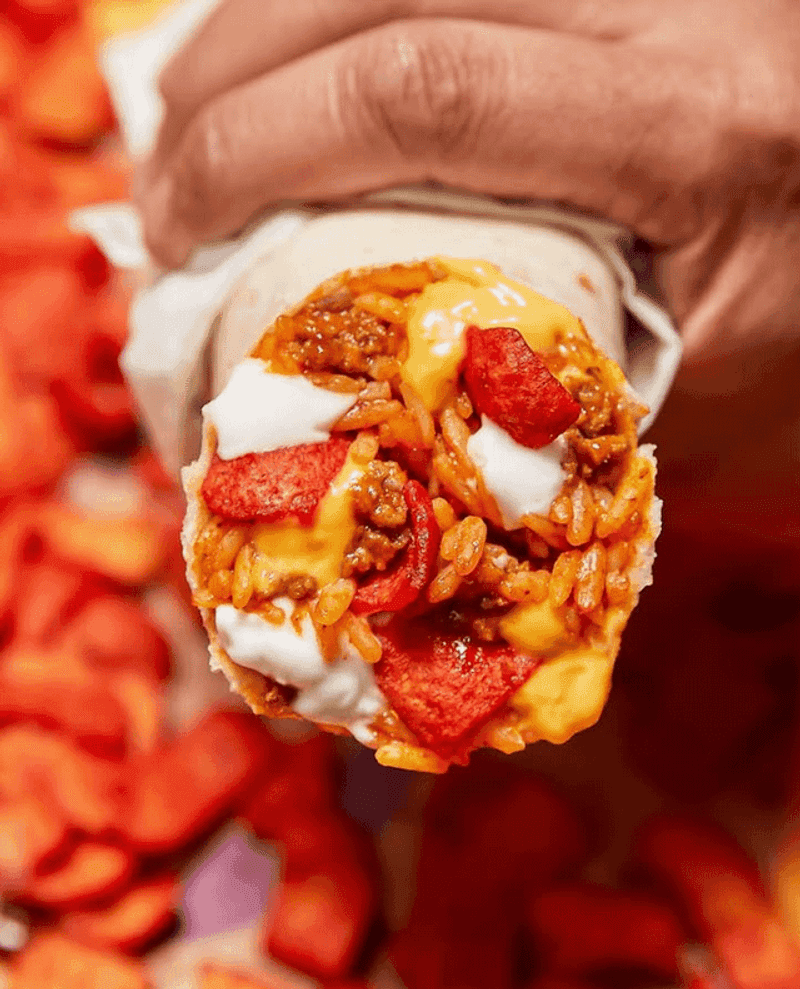
Taco Bell’s popular Beefy Crunch Burrito faced a major setback in 2011 when customers reported finding foreign objects in their food. Small plastic pieces and unidentified materials triggered immediate concerns about food safety protocols.
Social media amplified individual complaints into a nationwide story. Adding fuel to the controversy, some customers raised questions about ingredient labeling accuracy, particularly regarding the meat content.
The chain issued a hasty recall and quality control investigation. While temporary, the incident damaged consumer trust and highlighted the vulnerability of fast food chains to food safety scares in the social media age.
5. Wendy’s Spicy Nuggets
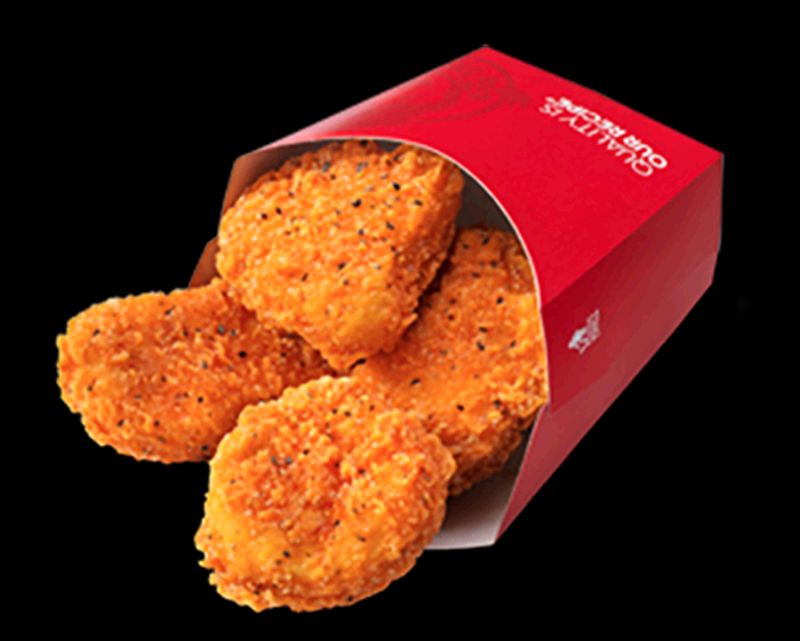
Wendy’s 2016 Spicy Nuggets launch promised a consistent kick that would satisfy heat-seekers nationwide. Marketing highlighted a perfect balance of spice and flavor that would set them apart from competitors.
Reality proved disappointingly different. Customers across the country reported wildly inconsistent spice levels – some nuggets were bland while others were mouth-scorching. The inconsistency sparked accusations of misleading advertising.
Social media filled with comparison videos showing the spice lottery customers faced with each order. The backlash forced Wendy’s to standardize their spice application process, but not before damaging their reputation for quality control.
6. Subway’s Footlong
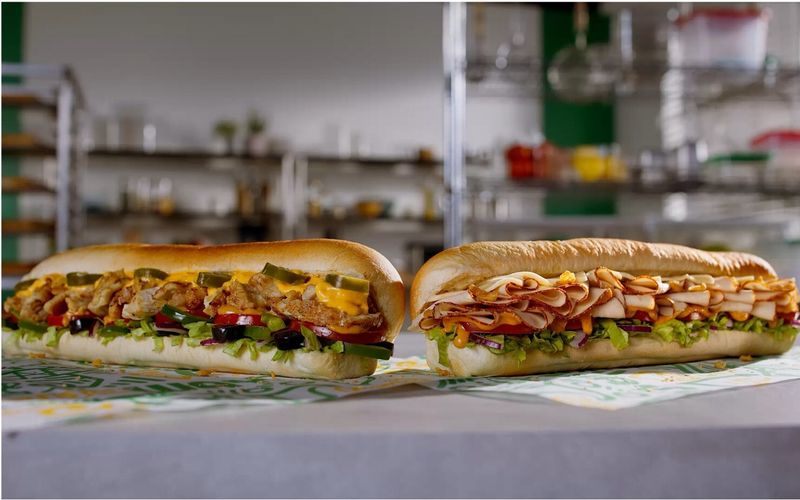
An Australian teenager’s viral 2013 Facebook post showing his Subway “footlong” measuring only 11 inches sparked global outrage. The image, captioned “subway pls respond,” received millions of views and prompted customers worldwide to measure their own sandwiches.
When many others discovered similarly undersized subs, class-action lawsuits followed. Attorneys argued the chain had engaged in deceptive marketing practices by consistently shorting customers on bread.
Subway initially defended the name as “just a brand,” not a measurement promise. Eventually, they settled by agreeing to implement quality control measures ensuring sandwiches would consistently measure 12 inches – proving every inch matters in fast food marketing.
7. McDonald’s Shamrock Shake
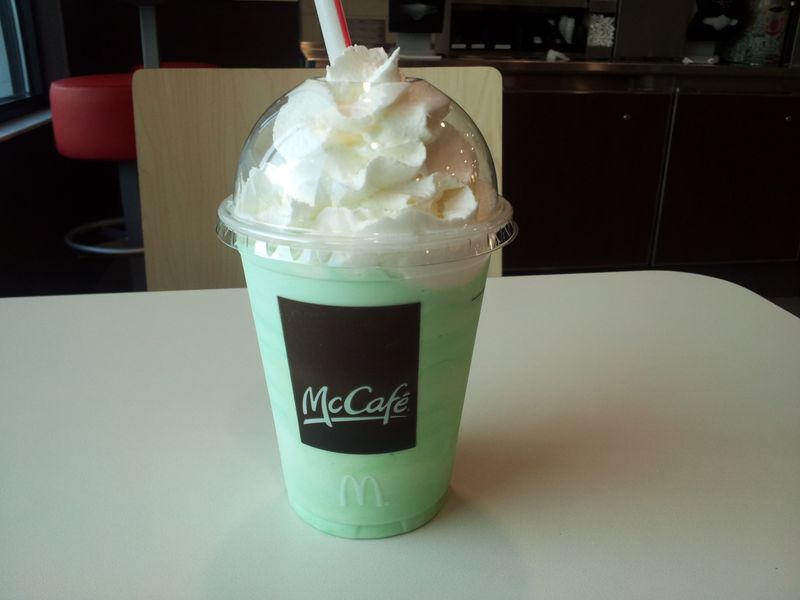
McDonald’s seasonal Shamrock Shake has been a St. Patrick’s Day tradition since 1970. The mint-flavored green milkshake developed a cult following, but health advocates eventually took notice of its staggering nutritional profile.
A medium shake contains around 560 calories and 78 grams of sugar – roughly 19 teaspoons! Critics blasted McDonald’s for marketing such a sugar-laden product to children through playful advertising and cartoon characters.
The controversy intensified when nutritionists pointed out that consuming just one shake exceeds the American Heart Association’s recommended daily sugar limit for adults. Despite the criticism, the seasonal treat remains popular, highlighting the tension between indulgence and health concerns.
8. Jack in the Box’s Loaded Monster Taco
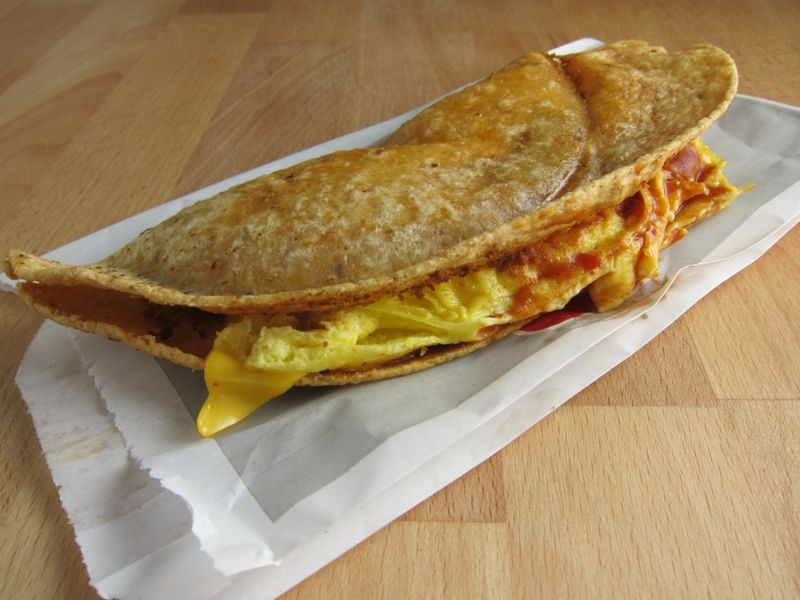
Jack in the Box’s 2019 Loaded Monster Taco promised an epic eating experience with “monster” proportions. Marketing materials featured enormous tacos overflowing with toppings and special sauce – a feast worthy of its intimidating name.
Customers felt duped when the actual product arrived. Social media filled with comparison photos showing standard-sized tacos with minimal toppings. Many complained about confusing ingredients that didn’t match the advertised description.
The disconnect between marketing and reality made the Monster Taco a target for online ridicule. Food reviewers created viral videos exposing the size difference, turning what was supposed to be a premium menu item into a cautionary tale about fast food advertising exaggeration.
9. Pizza Hut’s Hot Dog-Stuffed Crust
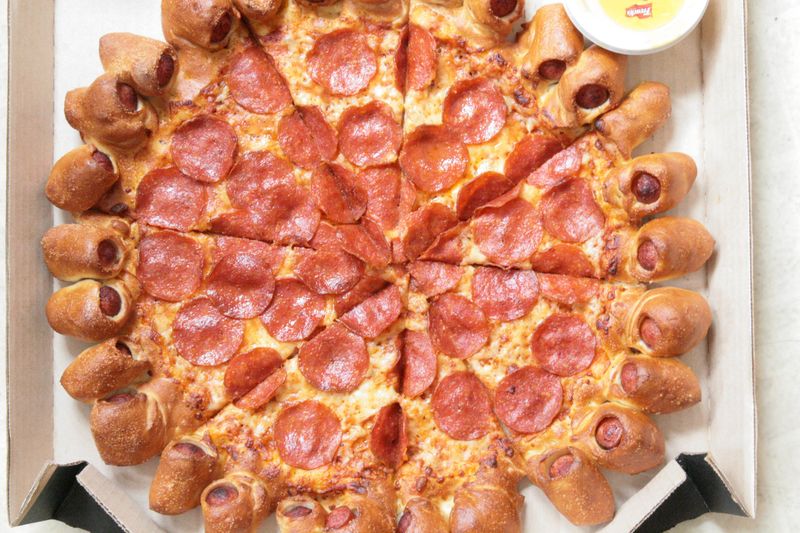
Pizza Hut pushed culinary boundaries in 2015 with their Hot Dog-Stuffed Crust Pizza. The creation featured a ring of hot dogs baked into the outer crust, combining two American favorites into one divisive dish.
Food critics lambasted the combination as a “culinary abomination” that represented everything wrong with processed food. Nutritionists pointed out that combining two already calorie-dense foods created a single item with an entire day’s worth of sodium and fat.
The pizza sparked heated debates about how far fusion food should go. While some adventurous eaters defended it as fun innovation, many saw it as a desperate publicity stunt that sacrificed taste for shock value.
10. Carl’s Jr. and Hardee’s 3-Way Burger
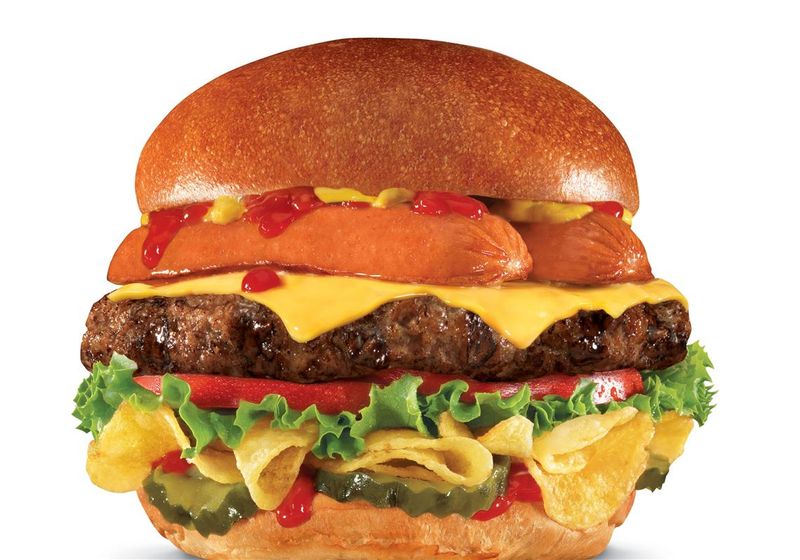
Carl’s Jr. and Hardee’s 3-Way Burger arrived in 2016 featuring three beef patties, three types of cheese, and bacon – a caloric nightmare weighing in at nearly 1,400 calories per burger. The provocative name and advertising doubled down on the excessive nature of the creation.
Health advocates immediately condemned the burger as glorifying unhealthy eating habits. The controversy intensified when marketing materials seemed to celebrate the extreme calorie count as a badge of honor rather than a warning.
Medical professionals pointed out that a single burger contained more calories and fat than many people should consume in an entire day. The 3-Way Burger became a symbol in debates about corporate responsibility in food marketing.
11. Dairy Queen’s Grilled Cheese Blizzard
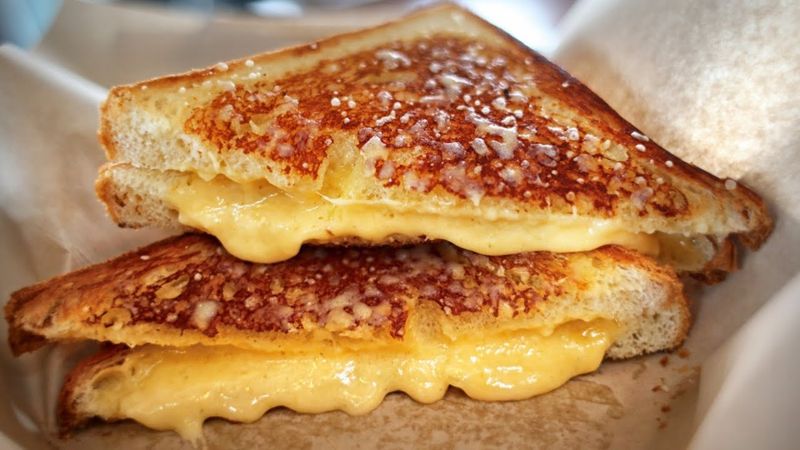
Dairy Queen shocked customers in 2019 with their Grilled Cheese Blizzard – an ice cream treat blended with actual grilled cheese sandwich pieces. The limited-time offering was part of a campaign to create unexpected flavor combinations.
The public reaction ranged from confusion to disgust. Food critics questioned whether the combination was a genuine attempt at innovation or simply a publicity stunt designed to generate social media buzz through shock value.
Brave customers who tried it reported an unsettling clash between sweet ice cream and savory cheese. The Blizzard became a frequent punchline on late-night television and a case study in how breaking flavor norms can backfire when combinations cross from innovative to unpalatable.
12. Krispy Kreme’s Donut Burger
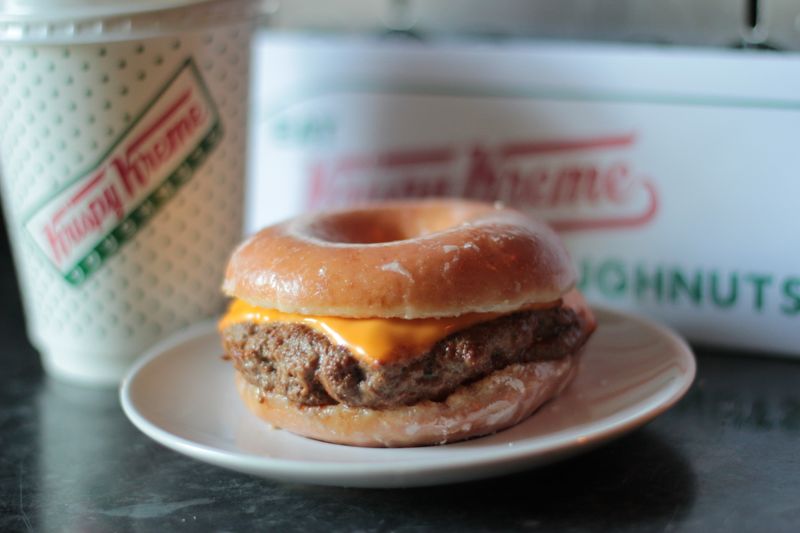
Krispy Kreme partnered with several restaurant chains to create the infamous Donut Burger – a beef patty sandwiched between two glazed donuts instead of buns. The sweet-savory combination first appeared at state fairs before making its way to fast food menus.
Cardiologists and nutritionists immediately sounded alarms about the creation. A single burger contained up to 1,500 calories and 67 grams of fat, prompting health experts to warn it could literally contribute to heart disease.
The burger became a symbol in debates about America’s obesity epidemic. While defenders celebrated it as an occasional indulgence, public health advocates argued that marketing such extreme foods normalized dangerous eating habits and contributed to the normalization of unhealthy food choices.
13. Taco Bell’s Doritos Locos Tacos
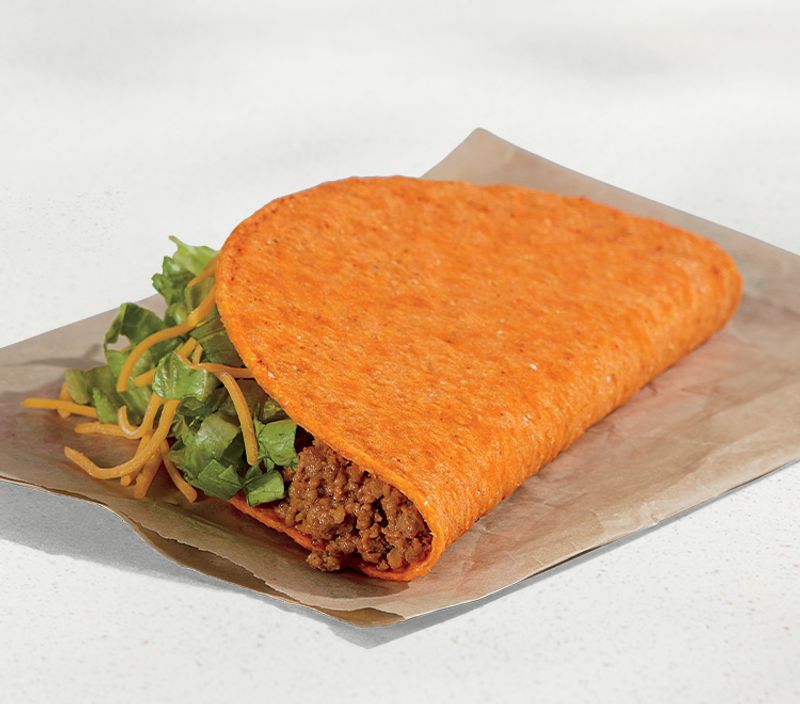
Taco Bell’s 2012 Doritos Locos Tacos – featuring taco shells made from actual Doritos chips – became one of the chain’s most successful launches ever. The bright orange shells and distinctive nacho cheese flavor sold over a billion units in the first year.
Despite commercial success, health advocates criticized the product as a cynical marketing ploy targeting children. The vibrant colors and familiar snack-food branding made the high-calorie item particularly appealing to young customers.
Nutritionists argued the collaboration represented a troubling trend of junk food brands joining forces to create even less healthy options. The controversy highlighted the tension between popular taste and public health concerns in the fast food industry.
Leave a comment